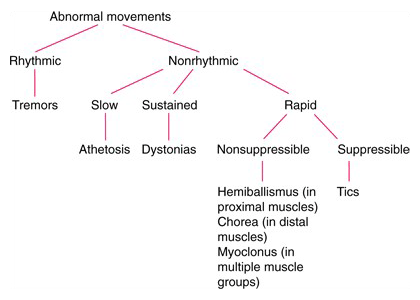What are Movement Disorders?
Michelle L. Lange, OTR/L, ABDA, ATP/SMS
This is the second blog in a series on muscle tone and positioning. Many people with increased muscle tone also demonstrate various movement disorders. Let’s take a look.
Common movement disorders include athetosis, dystonia, chorea, and ataxia.
Movement disorders can result in large and forceful movements which can cause client injury or equipment damage. Dynamic Seating can be helpful.
Athetosis is characterized by slow, writhing motions of the fingers, hands, and around the mouth. These movements are more continuous than dystonic movements and affect 5% of people with cerebral palsy (CP). Athetosis may be due to damage to the basal ganglia in the brain.
Dystonia is sustained muscle contractions that result in twisting movements and abnormal postures and affect 25 – 35% of people with CP. Dystonia may affect only one region, adjacent body regions, one side of the body, or all of the body. This movement disorder may also be due to damage to the basal ganglia.

Credit: SpringerLink, Creative Commons
Chorea is involuntary, abrupt, rapid, brief, and unsustained irregular movement which is sometimes described as “dance-like”. This movement disorder affects 5% of people with CP and is the result of damage to a different region of the basal ganglia. Internal globus pallidus output is also reduced in the brain.
Ataxia impacts coordination and particularly affects walking. It is caused by damage to the cerebellum area of the brain but can also be caused by damage to the spinal cord or other nerves.
Movement disorders are non-progressive (with the exception of some metabolic disorders). Stability in positioning is key to optimizing function. Each individual may need to stabilize in a unique area of their body in order to be functional in another area of the body. For example, one client I work with can drive his power wheelchair using a joystick with his left foot – but only if he stabilizes his arms by tucking them under a tray. Cognition is often average to above average in clients with athetosis and dystonia, so it is important to not underestimate this person’s potential.
Positioning cannot make movement disorders go away. However, providing stability is critical. Movement disorders can result in large and forceful movements which can cause client injury or equipment damage. Dynamic Seating can be helpful.
In subsequent blogs in this series, we will address primitive reflexives or obligatory patterns and common diagnoses where increased tone is present. We will then address tone management and general seating interventions which can be helpful when working with someone who has increased muscle tone. Finally, we will discuss how Dynamic Seating can be used in conjunction with these strategies to achieve and maintain an optimal position in these circumstances.
For more information, check out our CEU Course on this topic here!
